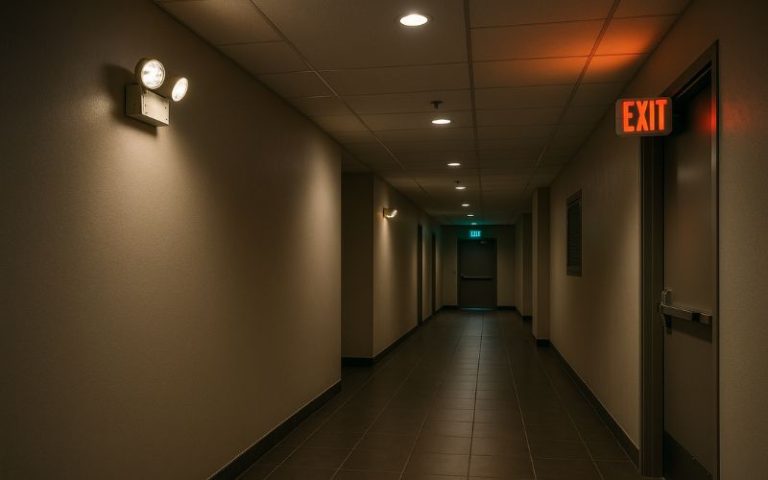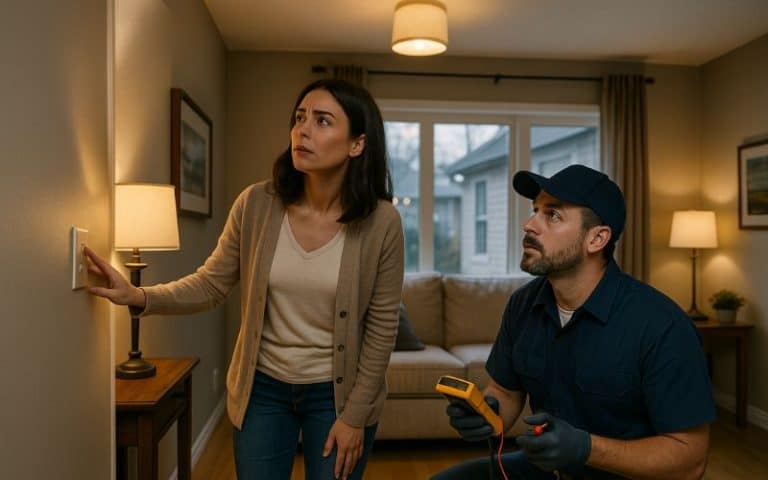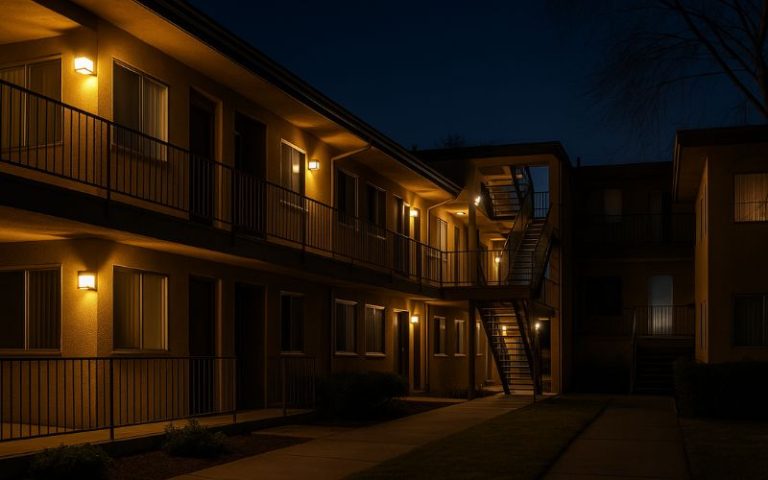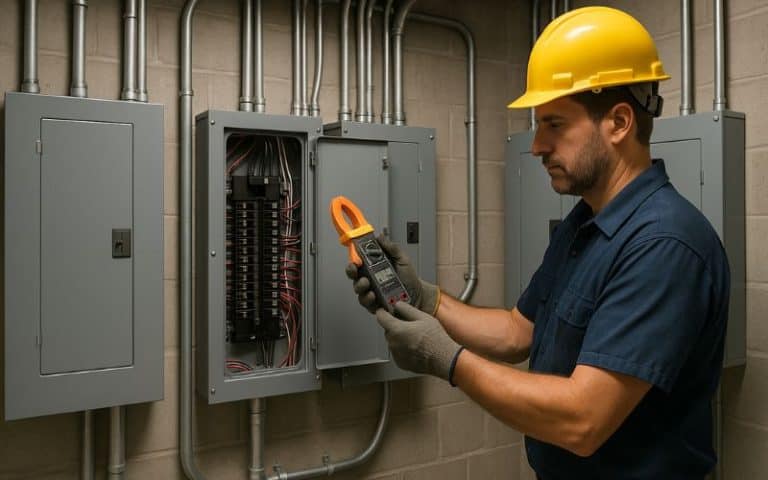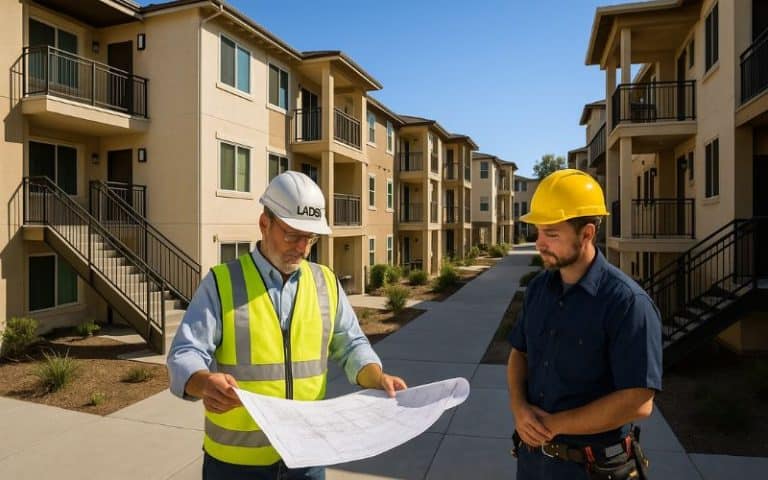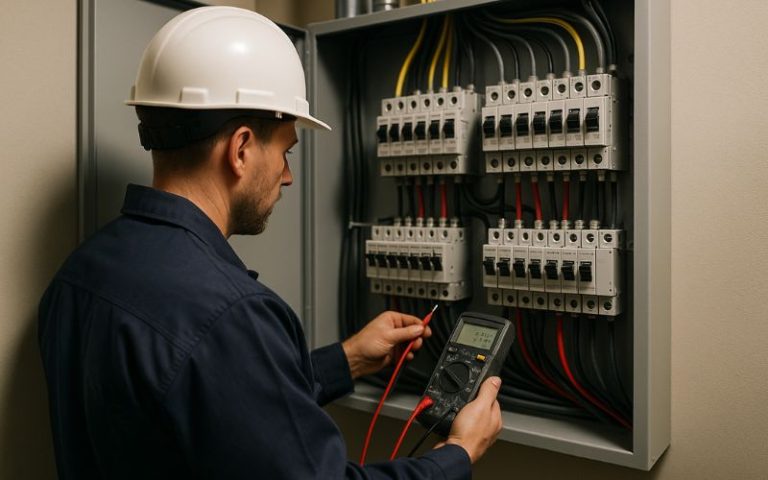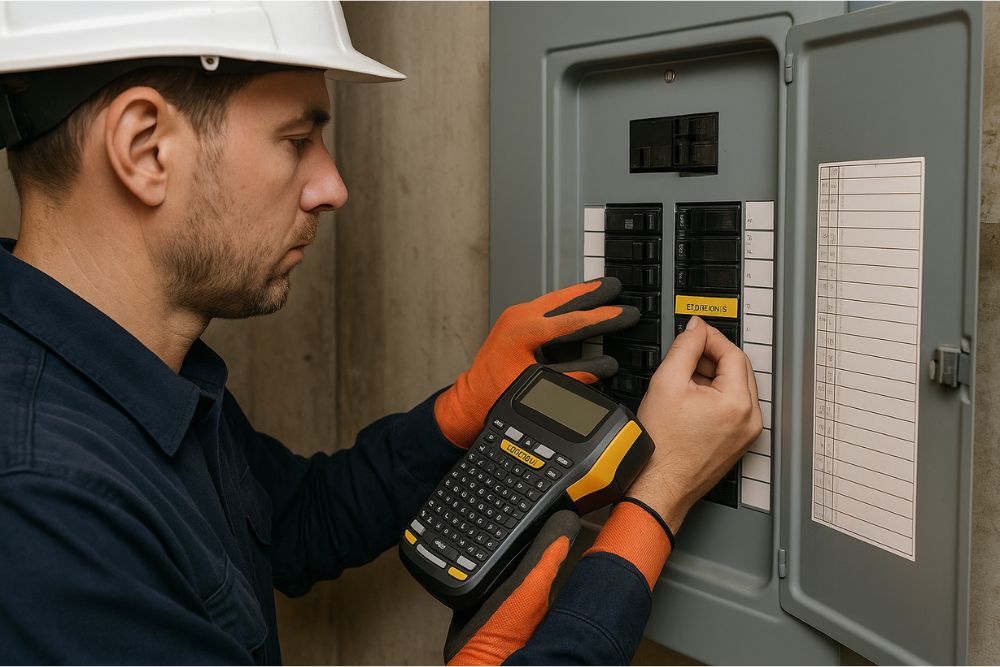
How to Properly Label Electrical Panels in Los Angeles Apartment Buildings (and Avoid Costly Mistakes)
Why Accurate Panel Labeling Protects Tenants and Property Managers
Picture this: it’s 11:30 p.m. in an LA apartment complex. A tenant’s breaker trips after plugging in a space heater. The maintenance team rushes to the basement, opens the electrical panel, and stares at rows of breakers with either no labels, faded handwriting, or worse — circuits mislabeled years ago by someone long gone. Minutes drag by while they flip breakers one by one, plunging multiple apartments into darkness until they find the right one. Meanwhile, tenants are frustrated, and what should’ve been a quick reset turns into chaos.
This scenario happens more often than you think, and it’s exactly why accurate electrical panel labeling is far more than a clerical task — it’s a safety and compliance necessity.
Safety First: Seconds Matter in an Emergency
When an electrical issue turns dangerous, every second counts. Imagine a kitchen fire caused by a faulty outlet. Firefighters or maintenance teams need to kill the power quickly — but without accurate panel labels, valuable minutes are wasted. Those minutes can mean the difference between containing a small fire and losing an entire apartment unit.
For property managers, accurate panel labeling is a way of saying: We’ve prepared for emergencies. We value tenant safety above all else.
👉 Related: Electrical Fire Prevention for Los Angeles Multi-Unit Properties
Compliance with Los Angeles Codes and NEC Standards
Los Angeles follows the California Electrical Code, which is based on the NEC (National Electrical Code) but with local amendments. Article 408.4 of the NEC requires that all circuits be legibly and durably identified. That means no scribbles on masking tape, no faded handwriting, and definitely no blank panels.
When inspectors walk into a building and see an unlabeled or poorly labeled panel, it’s an instant red flag. Even if everything else is up to code, unclear labeling can lead to a failed inspection. For property managers, that can stall leasing, delay renovations, or worse — land the building in the city’s Rent Escrow Account Program (REAP) until corrections are made.
👉 Related: Electrical Code Compliance in Los Angeles
Liability and Insurance Risks
Another overlooked angle is insurance. If an accident occurs — a tenant is shocked, an electrical fire spreads, or medical costs arise — insurers look closely at whether the property was maintained to code. Unlabeled or mislabeled panels weaken your defense and may even give insurers a reason to deny claims.
For property managers, that risk is enormous. Something as simple as a mislabeled breaker can escalate into a six-figure financial liability. Proper labeling isn’t just about convenience — it’s about protecting yourself legally and financially.
Tenant Trust and Peace of Mind
Tenants may not walk into a panel room, but they feel the impact of poor labeling. Every time an outage takes longer than it should, or the wrong breaker is flipped, trust erodes. In competitive LA rental markets, trust translates into retention. Buildings with a reputation for safety and reliability keep tenants longer and attract higher-value renters.
When you take labeling seriously, you’re telling tenants: Your safety matters. We don’t cut corners. That message builds long-term goodwill, which is just as valuable as compliance itself.
The Bottom Line for Property Managers
For Los Angeles property managers, accurate breaker panel labeling:
- Protects tenants in emergencies.
- Keeps properties compliant with NEC and local codes.
- Reduces liability and strengthens insurance protection.
- Improves tenant trust and retention.
It’s one of those small tasks that pays dividends across safety, compliance, and reputation. Yet, it’s also one of the most commonly overlooked.
The Most Common Panel Labeling Mistakes in LA Buildings
You’d be surprised how often electrical panel labeling is done wrong — even in professionally managed Los Angeles apartment buildings. On the surface, labeling might seem straightforward: write down which breaker controls which circuit. But in practice, shortcuts, tenant changes, and years of patchwork repairs lead to labels that are confusing at best — and dangerously misleading at worst.
Here are the mistakes property managers and inspectors encounter most often.
1. Blank or Missing Labels
It’s shocking how many panels in LA apartment complexes still have no labeling at all. Breakers are left completely blank, forcing maintenance staff to play a guessing game when issues arise. In an emergency, those wasted minutes can be catastrophic. Blank panels are also an automatic fail during inspections.
2. Handwritten Notes That Fade or Smudge
Even when labels exist, they’re often handwritten in pencil or ballpoint pen, scrawled on masking tape or sticky notes. Over time, heat, humidity, and dust cause them to fade until they’re unreadable. This is one of the most common violations cited during compliance checks.
👉 Related: Electrical Repairs Services in Los Angeles
3. Mismatched or Inaccurate Labels
Another widespread issue is incorrect labeling. Maybe a contractor updated wiring years ago but never updated the labels. Or perhaps a previous property manager “guessed” at circuits during a repair. The result? Labels that say one thing while the breaker controls something entirely different.
Inaccurate labeling is more dangerous than no labeling at all. It gives staff and tenants a false sense of security — until they flip the wrong breaker and realize too late that the stove or water heater is still live.
4. Overly Vague Descriptions
Labels like “lights,” “kitchen,” or “plugs” might feel sufficient, but in multi-unit apartment buildings, they’re too vague to be useful. Tenants, inspectors, and electricians need specific circuit identification, not general guesses. NEC requires “clear, evident, and specific” labeling — which means “Apt 204 – Kitchen GFCI” is acceptable, but “Kitchen” alone is not.
👉 Related: Circuit Breaker Services in Los Angeles
5. Labels That Don’t Match Unit Changes
Los Angeles buildings see frequent tenant turnover and renovations. Walls are moved, outlets are added, circuits are extended — but labels often stay the same. A panel might say “Unit 3 Living Room,” but the breaker now feeds an added air conditioner in Unit 5. Over time, these changes compound, making the entire labeling system unreliable.
6. Using Non-Durable Materials
Another common mistake is using cheap or temporary materials. Masking tape, sticky notes, or scrap paper aren’t designed to last in a panel room. Between dust, heat, and constant handling, they degrade quickly. Professional-grade panel labels should be made of durable, heat-resistant material with legible, printed text.
7. Overcrowded or Illegible Labels
In some panels, property managers try to cram multiple descriptions into one tiny space. The result is cluttered, illegible labels that no one can read in an emergency. Clarity and spacing are just as important as accuracy.
Why These Mistakes Happen
Most labeling mistakes boil down to two things:
- Deferred maintenance. Labeling gets put off because “it’s not urgent.”
- Lack of consistency. Different contractors or staff update panels without a standardized system.
The truth is, labeling mistakes aren’t just sloppy — they’re violations of code and real risks for property managers. An unlabeled or mislabeled panel can cost you an inspection, delay renovations, or, in the worst cases, put tenants in danger.
Step-by-Step: How to Properly Label Electrical Panels
Accurate breaker panel labeling doesn’t just happen — it requires a process. When done right, it creates a system that’s easy to read, durable, and compliant with both the NEC and Los Angeles building codes. Here’s how property managers and licensed electricians approach it.
Step 1: Conduct a Circuit Mapping Audit
Before labeling, you have to know exactly what each breaker controls. This involves systematically turning breakers on and off and recording the corresponding lights, outlets, and appliances. In multi-unit buildings, this process requires coordination with tenants and sometimes multiple electricians to ensure accuracy.
👉 Related: Electrical Inspections in Los Angeles
Step 2: Use Clear, Specific Descriptions
Once mapping is complete, breakers should be labeled with specific identifiers, such as:
- “Unit 203 – Kitchen GFCI”
- “Unit 105 – HVAC”
- “Hallway – Emergency Lighting”
Generic terms like “plugs” or “kitchen” don’t meet NEC requirements and create confusion.
Step 3: Use Durable, Professional Labels
Handwritten notes fade. Masking tape peels. To meet code, labels should be durable, legible, and designed for panel environments. Many electricians use printed adhesive labels or engraving for long-term readability.
Step 4: Maintain Consistency Across Buildings
For property managers overseeing multiple buildings, consistency is key. Labels should follow the same format across all properties. That way, maintenance teams, inspectors, and contractors instantly understand the system.
Step 5: Update Labels After Every Change
Labeling isn’t a one-and-done task. Every time wiring changes — whether a new outlet, an EV charger installation, or a panel upgrade — the labels must be updated. Many violations stem from years of deferred updates.
👉 Related: EV Charger Installation in Los Angeles
Step 6: Create a Panel Directory
In addition to physical labels, NEC recommends a directory or chart inside the panel door. This directory lists each breaker and its corresponding circuit. Digital tools now make it possible to create directories that can be saved and shared with property management teams.
Step 7: Schedule Regular Verification
Finally, panel labels should be verified every 3–5 years, or whenever electrical demand changes significantly. This ensures accuracy and compliance over time.
When done right, panel labeling transforms breaker boxes from mysteries into clear, efficient tools for property management.
How Breaker Labeling Saves Time and Money
Accurate breaker panel labeling might sound like a detail, but for Los Angeles property managers, it creates measurable savings in both time and money.
Faster Emergency Response
In an emergency — whether it’s an electrical fire, a flood near outlets, or a tenant shock incident — speed is everything. When panels are accurately labeled, maintenance staff or first responders can shut off power to the right circuit immediately. That quick response can mean the difference between a minor incident and catastrophic damage.
👉 Related: Emergency Electrical Repairs in Los Angeles
Reduced Tenant Disruptions
When labels are missing or inaccurate, maintenance teams often flip multiple breakers to find the right one. This leaves tenants in the dark, disrupts their daily lives, and generates complaints. Accurate labeling minimizes downtime, creating a smoother tenant experience.
Fewer Failed Inspections
Los Angeles inspectors routinely cite unlabeled or mislabeled panels as violations. Each failed inspection costs time, rescheduling fees, and potentially lost rental income if move-ins or renovations are delayed. Accurate labeling eliminates this risk, saving property managers from costly headaches.
👉 Related: Electrical Permits in Los Angeles
Lower Insurance Risk
Insurance carriers reward buildings with strong safety records. When panels are properly labeled and inspections are passed consistently, insurers may offer better premiums and coverage terms. Conversely, mislabeled or unlabeled panels increase risk and can contribute to higher costs — or even claim denials.
Streamlined Maintenance and Repairs
Accurate labeling reduces time spent troubleshooting. Instead of spending hours guessing which breaker controls a circuit, electricians can immediately access the right one. This efficiency lowers labor costs and reduces disruption for tenants.
Long-Term Property Value
Well-maintained, compliant electrical systems increase property value. Buyers, investors, and lenders look closely at inspection records. A property with accurate panel labeling, documented inspections, and strong compliance is more attractive and commands higher value.
The Multiplier Effect
The real savings come from the multiplier effect: every minute saved in emergencies, every inspection passed on the first try, every tenant retained instead of lost to frustration. Over the lifetime of a Los Angeles apartment complex, those small wins add up to six-figure benefits.
Professional Labeling vs. DIY: Why Property Managers Should Call an Electrician
It’s tempting for property managers or maintenance staff to try labeling panels themselves. After all, it seems straightforward: flip breakers, see what shuts off, and write it down. But in reality, DIY labeling is one of the reasons so many panels in Los Angeles are mislabeled.
The Risks of DIY Labeling
- Missed Circuits: Multi-unit properties often have complex load sharing. Without training, it’s easy to overlook shared or split circuits.
- False Confidence: Incorrect labels can give maintenance teams a false sense of security, leading to dangerous mistakes during emergencies.
- Non-Compliance: The NEC requires labeling that is “legible, durable, and specific.” Handwritten tape often doesn’t meet this standard.
- No Documentation: DIY jobs rarely include a panel directory or records that inspectors, insurers, and future electricians rely on.
Why Professionals Do It Better
Licensed electricians bring tools, training, and compliance knowledge that property staff simply don’t have. With specialized testing equipment, they can trace circuits accurately — even in buildings where wiring has been patched and rerouted over decades.
Professionals also:
- Use durable, heat-resistant labels that meet NEC requirements.
- Create clear directories inside panel doors and digital copies for property management records.
- Update labels during panel upgrades, inspections, or maintenance visits, keeping them accurate over time.
👉 Related: Commercial Electrical Services in Los Angeles
For property managers, hiring a licensed electrician is less about outsourcing and more about buying peace of mind.
Conclusion: Make Breaker Panel Labeling Part of Your Safety Strategy
Accurate panel labeling may not be the flashiest part of property management, but in Los Angeles, it’s one of the smartest. It protects tenants, prevents emergencies from spiraling, and keeps your properties in line with both NEC and city code requirements.
Think about it this way: unlabeled or mislabeled panels create confusion, risk, and liability. Properly labeled panels create clarity, compliance, and trust. For property managers juggling dozens of responsibilities, that clarity is priceless.
At RG Electric, we’ve helped property managers across Los Angeles transform messy, confusing breaker boxes into clean, code-compliant systems. Whether you manage a single complex or multiple multi-unit buildings, our team ensures your panels are mapped, labeled, and ready for inspections.
With us, you’re not just avoiding violations — you’re building safer homes, protecting your investment, and showing tenants that you value their well-being.
📞 Call RG Electric today at (323) 521-5131 or request a Free Estimate. Let’s make sure your electrical panels are clearly labeled, fully compliant, and inspection-ready.
Because when it comes to electrical safety in Los Angeles apartment buildings, clarity isn’t optional — it’s critical.

